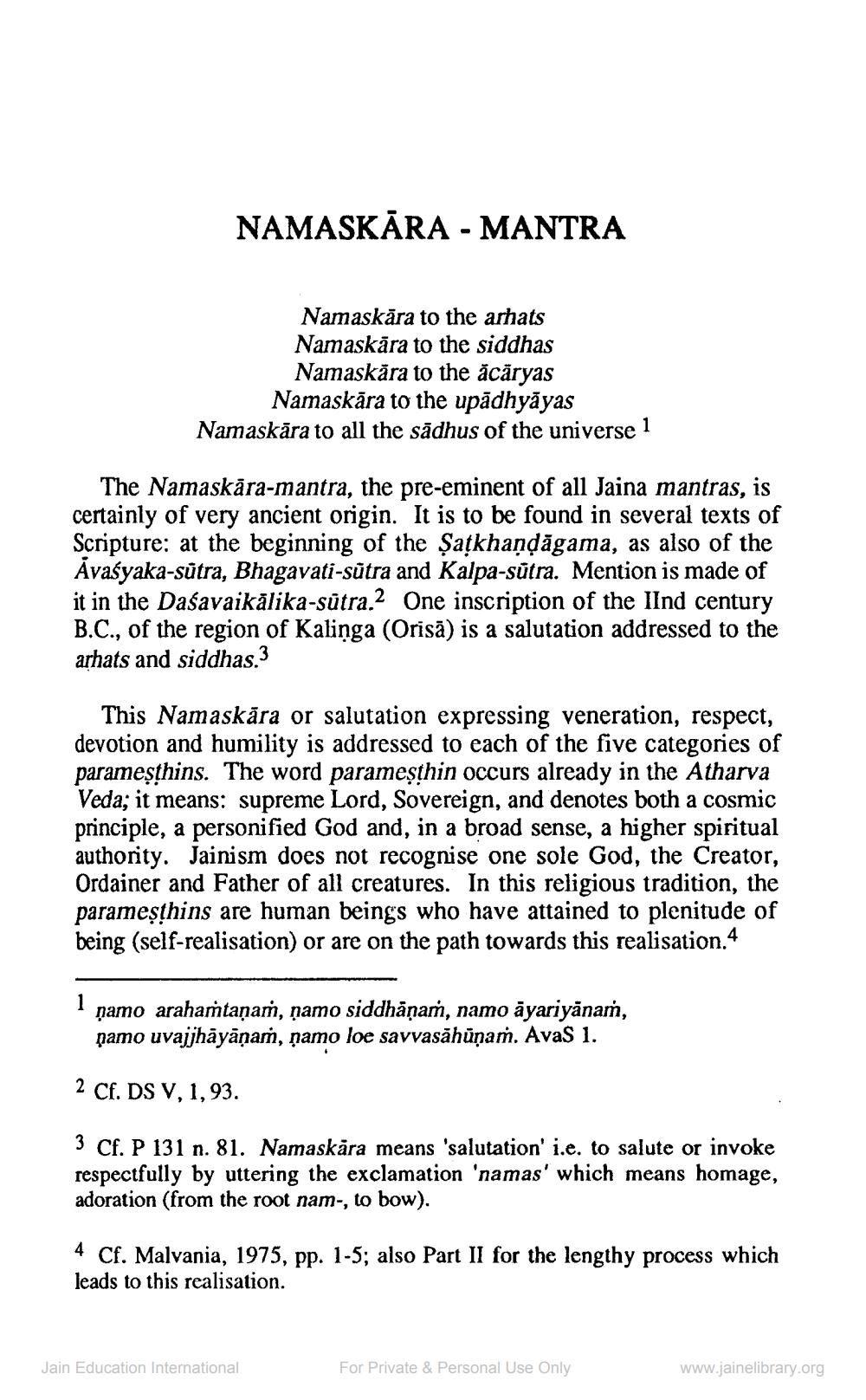________________
NAMASKĀRA - MANTRA
Namaskāra to the arhats Namaskāra to the siddhas
Namaskara to the ācāryas
Namaskara to the upadhyāyas
Namaskara to all the sadhus of the universe 1
The Namaskara-mantra, the pre-eminent of all Jaina mantras, is certainly of very ancient origin. It is to be found in several texts of Scripture: at the beginning of the Ṣatkhaṇḍāgama, as also of the Avaśyaka-sūtra, Bhagavati-sūtra and Kalpa-sūtra. Mention is made of it in the Dasavaikālika-sūtra.2 One inscription of the IInd century B.C., of the region of Kalinga (Orisā) is a salutation addressed to the arhats and siddhas.3
This Namaskara or salutation expressing veneration, respect, devotion and humility is addressed to each of the five categories of parameṣthins. The word parameşthin occurs already in the Atharva Veda; it means: supreme Lord, Sovereign, and denotes both a cosmic principle, a personified God and, in a broad sense, a higher spiritual authority. Jainism does not recognise one sole God, the Creator, Ordainer and Father of all creatures. In this religious tradition, the parameṣṭhins are human beings who have attained to plenitude of being (self-realisation) or are on the path towards this realisation.4
1
ṇamo arahaṁtaṇaṁ, ṇamo siddhāṇaṁ, namo āyariyānam, namo uvajjhāyāṇam, namo loe savvasähūņam. AvaS 1.
2 Cf. DS V, 1, 93.
3 Cf. P 131 n. 81. Namaskāra means 'salutation' i.e. to salute or invoke respectfully by uttering the exclamation 'namas' which means homage, adoration (from the root nam-, to bow).
4 Cf. Malvania, 1975, pp. 1-5; also Part II for the lengthy process which leads to this realisation.
Jain Education International
For Private & Personal Use Only
www.jainelibrary.org




